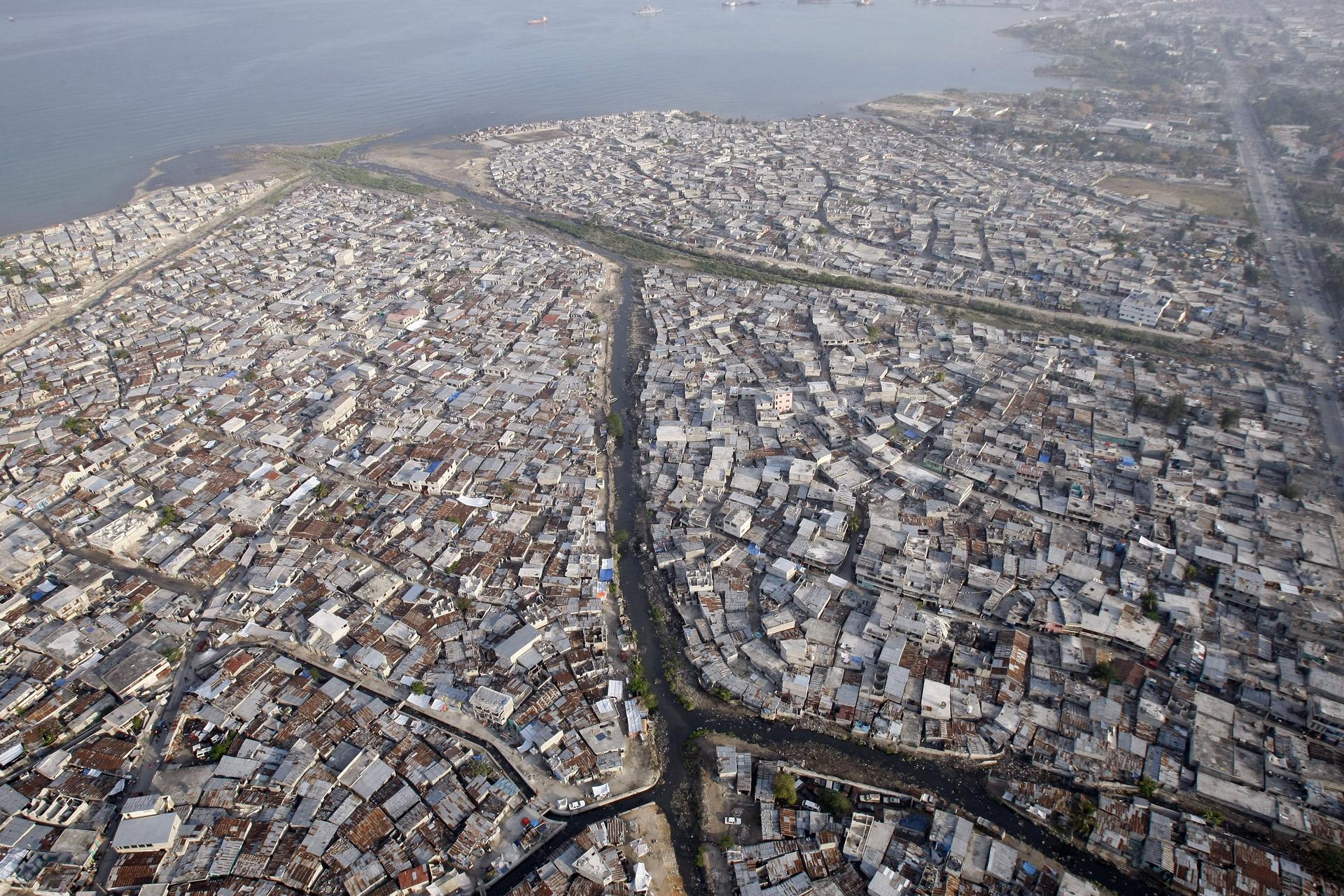High up in Haiti’s Petionville, another world
Aerial view of Port-au-Prince taken on February 17, 2010.
PORT-AU-PRINCE — Leaving Haiti, we drove through the city center circling one last time past the fetid despair of the Champs de Mars tent city which was the first place we visited on this journey.
The camps still raise the most maddening and urgent question: How is it possible that 500,000 people still live in tents and temporary shelters more than two years after the earthquake and with $12 billion in aid commitments from the international community?
And we continued past the destroyed National Palace and the pyramid-shaped monument, which was started but never completed by former president Jean-Bertrand Aristide who was ousted in 2004.
The unfinished monument stands as a metaphor for the dashed hopes and failed promises of Aristide’s government and those that came before and after, reminiscent of the palace's toppled and exposed structural beams.
And we rose up into the hills just outside of the city toward the wealthy enclave of Petionville and looked down on the valleys where muddy hillsides are packed with hovels as poorly constructed and vulnerable to shifting soil now as they were before January 12, 2010.
The disparity of wealth is jarring enough to feel flush with shame and uncomfortable even in the air conditioning of our rented vehicle as we talk with our driver, Ernest, who shrugged his shoulders and said quite simply, “It’s always been that way.”
We arrived at the gated entrance to the Hotel Montana and climbed up higher and higher on the steep drive into the well-manicured grounds of the four-star hotel which suffered severe damage and loss of life in the earthquake.
You have to ask how is it that this luxury hotel has been so quickly and beautifully renovated while hundreds of thousands remain homeless. How has the international community failed to find a way to rebuild their homes?
And we pulled in the parking lot along side shiny, new Toyota Land Cruisers with the insignias of the big NGOs painted on the side of the $75,000 vehicles.
And we walked in past the swimming pool where NGO officials and their families on expat packages gathered on chaise lounges and lathered sunscreen on themselves as they watched their young children splash in the shallow end.
Up here at the Montana patio restaurant, the highest point in Port-au-Prince, we looked out at a panoramic view of the sprawling, teeming city and saw the patches of blue tents and hovels with corrugated tin roofs and the small walled compounds of the wealthy and all the complexity and madness that is Haiti.
And we still end up asking the question that brought us here and that is driving our reporting project:
Where did all that aid money go?
And with a growing team of Haitian and American reporters, we’re going to keep working on providing some answers.
You can read the first part of the Ford Foundation-funded continuing series at “Fault Line: Aid, Politics and Blame in Post-Quake Haiti.”
![]()
